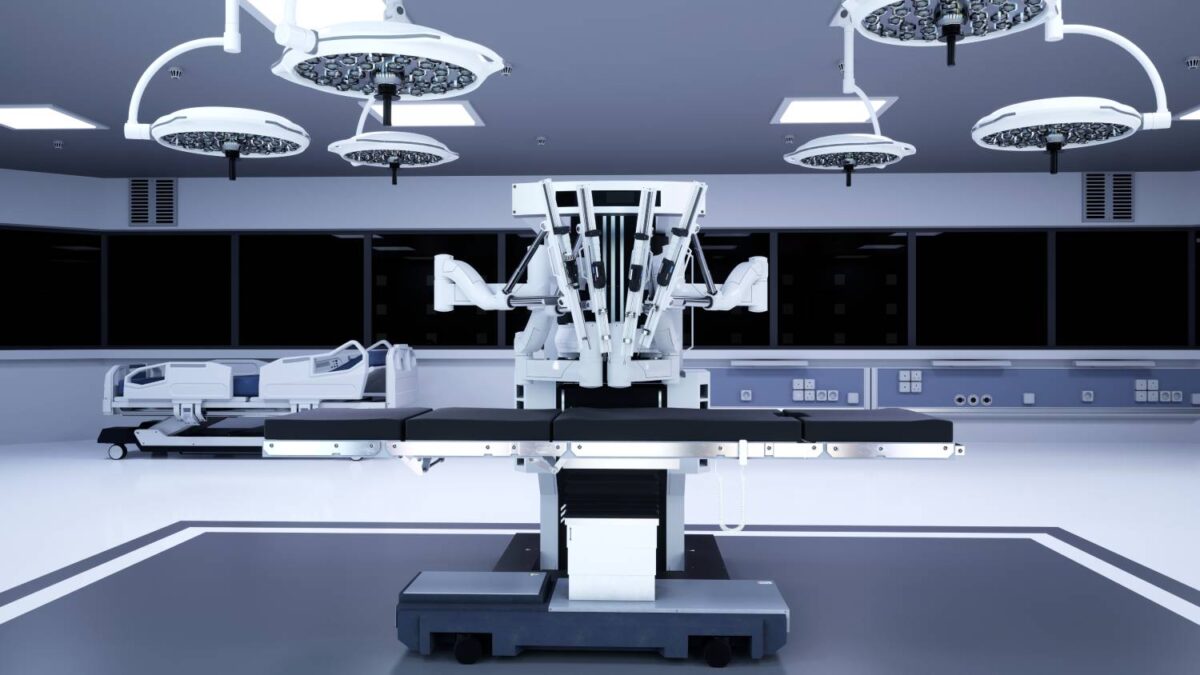Applications of the Da Vinci Surgical Machine

The use of robots in surgeries has risen in popularity. One of the most well-known robotic surgical systems is the Da Vinci surgical system, manufactured by Intuitive Surgical Inc. The system consists of three major components: the surgeon console, the patient cart, and the vision cart. The surgeon sits comfortably in front of the surgeon console, which gives them a clear, magnified view of the patient’s anatomy. The surgeon has access to a variety of controls on the console, which is then translated to precise instrument movements at the patient cart. The vision cart includes a screen that provides the rest of the team with visuals from the operation [1]. Over the years, some procedures have become increasingly reliant on the Da Vinci surgical system due to its ability to perform minimally invasive surgeries. Compared to traditional open surgeries, the Da Vinci robotic system’s high precision allows surgeons to make smaller incisions, which lead to faster patient recovery [2].
The Da Vinci system can be used in a wide range of different surgeries, but it is most frequently used in urological, gynecological, and gastrointestinal surgeries. In fact, over 70% of Da Vinci procedures are for prostatectomies and hysterectomies. Robotic surgeries have become very common when treating patients with prostate cancer and endometrial cancer. The Da Vinci system is widely used in these procedures because of the high level of precision required in these surgeries. In addition, to expedite postoperative recovery, a minimally invasive procedure is preferable to open surgery. High resolution three-dimensional imaging is another advantage, allowing surgeons to operate with improved visual clarity and depth perception. This has led to the increased utilization of the Da Vinci system in neurosurgery and orthopedics, in which high definition and resolution in imaging are critical. In surgical cancer treatment, this reduces the risk of damaging benign tissue when removing tumors [2].
Although less common than urological and gynecological surgeries, hepatobiliary surgeries have also benefitted from the Da Vinci system. Hepatectomy is a method in which a malignant tumor is removed from the liver. Traditional open hepatectomy requires a long incision of the abdomen, and the complexity of the liver makes it difficult to remove a tumor cleanly without affecting surrounding blood vessels. Introducing the Da Vinci system has led to minimally invasive hepatectomies, fewer hemorrhages during operation, and faster recovery among patients [3].
Despite its many merits, the most glaring disadvantage of this robotic system is its staggering cost. Each machine averages around $2 million, not including the annual maintenance fees hospitals must pay to the manufacturer. Analysis shows that Da Vinci surgeries are more costly than laparoscopic or traditional open surgeries. Additionally, robotic surgeries take more time than conventional surgeries, so patients must be sedated longer. However, a study conducted by Hu et al. was able to lower the cost of each gastrectomy performed by the Da Vinci system. Instead of the classic Da Vinci mode in which four surgical arms and one assistant are utilized, they utilized three surgical arms and two assistants. By using fewer arms, the cost of frequent instrument replacement was decreased from $3690 per surgery to $2761. The length of surgery was also shortened from 203 minutes for the classic Da Vinci mode to 176 minutes for the revised mode [4]. Therefore, if the surgeon decides that the advantages of the system outweigh its costs, there are creative ways to lower costs when necessary.
The Da Vinci surgical system has broadened the scope of safe, minimally invasive surgeries. With its increased use in healthcare facilities, the cost of the system can be expected to decrease, so that more patients can enjoy the benefits of this technology.
References
1. “Intuitive for Patients.” Davincisurgery.com, www.davincisurgery.com/.
2. Leung T, Vyas D. Robotic Surgery: Applications. Am J Robot Surg. 2014, 1(1):1-64. https://www.ncbi.nlm.nih.gov/pmc/articles/PMC4615607/
3. Wu Y, Chen J, Li Y, Gong J. Application of da Vinci Surgical Robotic System in Hepatobiliary Surgery. International Journal of Surgery and Medicine 2018, 4(1):22-27. https://www.ejmanager.com/mnstemps/136/136-1504527866.pdf?t=1618775266
4. Hu M, Han C, Guo T, Tian H, Zhan W, Yang J, Jing W, Deng Y, Li X, Ma S, Cai H, Ma Y. Application of da Vinci robot with the “3 + 2” mode in radical gastrectomy for gastric cancer, Medicine. 2020, 99(46):e22988. doi: 10.1097/MD.0000000000022988.
